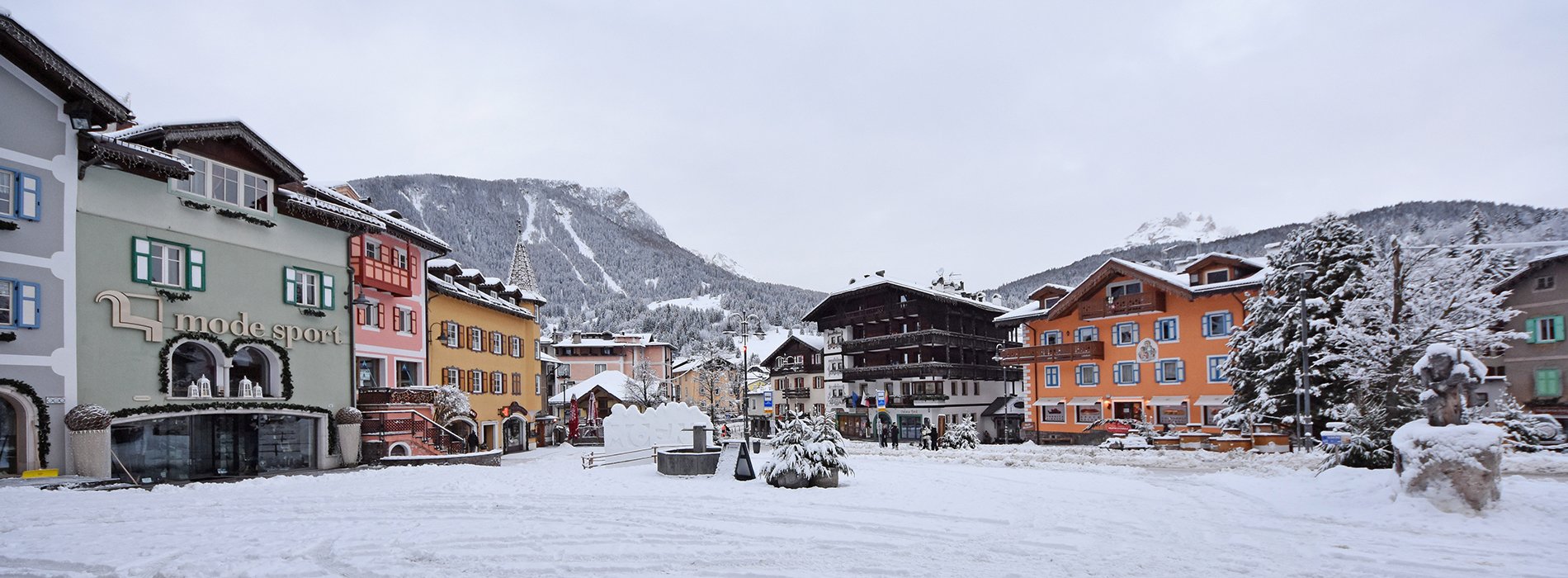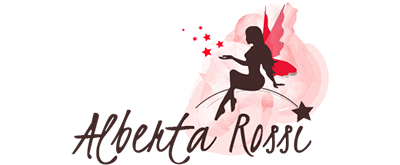Interesting districts and areas
Hamlets, history and legend
Turchia 
An unmissable destination during your stay is this small village, an ancient district of Moena that is perfect for a brief but interesting wander. The neighbourhood is very well looked after by its residents who have organised the "Grop de Turchia" association to protect, promote and develop the traditions of this ancient road. They decorate barns, fountains and even woodsheds, embellishing them with beautiful flowers and small wooden sculptures.
 So, the old barns turn into well-kept buildings despite their age, enhanced by the contrast of the colours of the plants and old wood they were built with. One of these, the "Tabià del Bronza", is open to the public during July and August and is home to the exhibition of fauna held by the Moena association hunters, where visitors can discover the animals our mountain is home to.
So, the old barns turn into well-kept buildings despite their age, enhanced by the contrast of the colours of the plants and old wood they were built with. One of these, the "Tabià del Bronza", is open to the public during July and August and is home to the exhibition of fauna held by the Moena association hunters, where visitors can discover the animals our mountain is home to.
What to see
The "Tabià del Copeto" is without a doubt the most beautiful and well-preserved barn in the district. The data fixed above its door bears the year 1693; this was only reattached in recent years, having been found by the owners inside. The Tabià is very popular with tourists, made even more beautiful with flowers and old objects, such as utensils, equipment and agricultural machines that make it a very fascinating and interesting visit. The "Tabià del Bronza", where the exhibition of fauna is held, dates back to 1567, while the "Tabià del Badia", which can be seen during the festa di Turchia (Turkish Festival), dates back to 1586.
A blend of history and myth
Where the name really derives from is unclear, there are two main theories to explain the toponymy: there are those who maintain that the name derives from "torchia", a term to indicate the place where the flax was spun. And then there are those, such as all the residents of the district, who prefer the legend of the Turkish soldier to this type of story. Our "Turks" are proudly attached to this tradition, so much so that they respect festivals and customs from Eastern culture, to the extent that in recent years they have even attracted attention from the Turkish press and residents of this country.
Legend has it that in 1683, the year of the siege of Vienna by the Ottoman Empire, a Turkish soldier taken captive in the Austrian capital managed to escape and in his wanderings ended up in Moena, in the district that at the time was known as "Ischiazza". The Turk, wounded and by then on his last legs, was generously aided by the inhabitants of the area who cared for him until he healed. The help and generosity of the people led the Turk to move to Moena definitively, to that same district that would go on to be called Turchia.
Carnival and the ‘bastie’
Until a few years ago, tradition dictated that during carnival people from the Turchia district devoted the parade to its Turkish "origins".
During the parade through the village streets, the crowds could admire typical oriental costumes and sultans, slaves, soldiers, women and children all appeared, celebrating the myth of their eastern "countryman". However, in recent years, with the addition of the summer parade to celebrate the Festa di Turchia, the "Turkish" residents have allowed some changes to the carnival, dressing the floats in various different themes.
But carnival and the "bastie" are not the only opportunities to witness a Turkish parade. Another popular Val di Fassa tradition sees the celebration of a "bastia" for every girl from a certain district engaged to a man from a different neighbourhood or village. In the Turchia district, this "bastia" becomes a real show, in which the groom, escorted by soldiers and women in oriental dress and followed by friends and relatives, has to arrive in the district to request permission from the sultan to take the girl away from the area.
La Festa di Turchia
The Festa di Turchia, organised by the "Grop de Turchia" in collaboration with the Municipality of Moena, has become a well-loved event in recent years, with a wide appeal.
An enormous door is built for every entrance to the neighbourhood for the occasion, and every house and barn flies the Turkish flag with pride. The celebrations begin on Friday evening and last the whole weekend. During the Saturday, the parade of Turks through the streets of the village takes place, starting from Piaz de Ramon at 5.00pm; the star of the parade is the sultan sat on a throne borne by slaves and followed by women in oriental dress and children. Once the procession has finished, it’s back to the heart of the festival, Turchia, where visitors and residents can visit the "tabià" (barns) that are open to the public for the occasion and used as exhibition spaces, watch artisans at work and local people dressed in traditional Tyrolese dress give demonstrations of ancient trades, try typical delicacies of Ladin and oriental cuisine, dance to the music of various folk bands and attend concerts by the Enrosadira choir and the Banda di Moena.
The Nativity tour
In winter, to celebrate the Christmas holidays, the Grop de Turchia association organises a "via dei presepi", or "nativity tour": the local residents set up nativity scenes along the road outside their houses and strolling through the district becomes a chance to admire the Turkish nativity scenes.
The most spectacular is without a doubt the scene within the Tabià Copeto, it is a life-sized scene set in a truly unique setting. On Christmas day, the Enrosadira choir wish a merry Christmas to everyone, holding a short open-air concert in front of this nativity scene.
Ciajeole 
 The name of the oldest district in the village derives from "ciajea", a term used to describe the spaces in which cheese is produced.
The name of the oldest district in the village derives from "ciajea", a term used to describe the spaces in which cheese is produced.
This zone was the first inhabited area of Moena; it was settled by shepherds from the Val d’Ega (Ega Valley) around the year 1000. The Vicarage was once found in this ancient district, but is today situated near the church of San Vigilio; however, the old spot is still marked thanks to a spectacular fresco by Valentino Rovisi, a well-known painter from Moena of the eighteenth century, to whom until recently the same road on which the building was located was dedicated, but which has now been renamed as Strada Salejada.
It is told that in 1703 this old vicarage sheltered the Bishop of Trento, Giovanni Michele Spaur, fleeing from the city after the French advance. Once the uproar died down, after four months in incognito, the Bishop revealed himself and to celebrate his lucky escape he consecrated the Sorte church.
What to see
The road is home to a large number of "tabià", among which the "Tabià de la Regola" certainly merits a visit, the barn which was once the meeting place for the administrators of the Regola della Comunità di Fiemme. The small church of the Madonnina, built in 1713, and "Ciasa Piaz", which dates back to the early Eighteenth century and is also home to a fresco by Rovisi are both very interesting. This district has also organised the Festa di Ciajeole for some years now, similar to the Turchia celebrations, here visitors can eat, dance and visit exhibitions inside the tabià.
Ciarnadoi 
This district began with the "Pontea de Ciarnadoi", or the "Ciarnadoi ascent", where a capital dedicated to San Rocco was built. The building dates back to 1572 and is a memorial to the terrible plague that struck Moena in those same years, which caused a vast number of casualties. The capital was erected by the surviving inhabitants to give thanks for having been spared. The frescoes were subsequently painted by the eighteenth-century painter Valentino Rovisi.
Just before the capital, adjacent to the district but not actually part of it, lies the "Bottega del Pinter", or the "Cooper’s shop", a detached section of the Ladin Cultural Institute and former workshop of the cooper Domenico Dellantonio (1851-1937). Today it is a museum displaying all the equipment specific to the trade, arranged by the different working phases.
Historical town center 
The historical town centre is an area of great interest, where historically important buildings stand side by side with new or completely renovated properties.
The centre is home to one of the oldest constructions in the village, "Ciasa Ramon", situated in the piazza of the same name, which is thought to have been rebuilt in brickwork in ‘600 on a pre-existing fourteenth century building. The house is decorated with two frescoes, which are sadly in irreversible disrepair.
The same piazza is home to the building which was once the Alpino hotel, in stark contrast with the architecture of the barn next to it, the "Tabià Janac", which notably has all the characteristics of a typical period building; for example, the bridge to the entrance, the ancient deck, or the grill for drying ears of grain. Opposite this tabià is what once used to be the tollhouse, while on the opposite side of the piazza is another extremely interesting barn, the "Tabià Bander", and, just a little further on is a house that was once one of the most typical and imposing in Moena, "Ciasa Cioto", flanked by a barn and "Ciasa Chiochet" in front, a building frescoed in 1658 by the painter Zuane Forcellini from Agordino.
Strada Riccardo Löwy 
The main street in Moena is dedicated to the Austrian Engineering Officer Riccardo Löwy, a Jewish man born in 1866 in Bohemia, who was sent to Moena to lead fortification works in the village and Passo San Pellegrino. Thanks to his position, the officer was able to offer many young men and fathers a place in his workforce, not only to provide them with a good wage, but also because this meant that many were not called up and sent to the front. Once the war finished, in 1918 he received honorary citizenship of Moena and left the village only to return with his family in 1942, when he was sadly arrested for being Jewish. It is said that he was taken to Auschwitz where both he and his family met their deaths.
This is the main road of the village, overlooked by some hotels and small gardens, and which provides access to the two piazzas.
The Navalge Area 
The name Navalge means "new land", or rather, land in constant reclamation due to overflowing. It is in fact said that where the multi-purpose centre of Moena and the village’s largest car park stand today was once a lake that was then reclaimed to obtain land to use as vegetable gardens. The coat of arms of Moena, a boatman on a lake, originated from that very lake that occupied all of lower Moena.
Cross the tennis, football, bowls and beach volley courts and climb up past the local playground to reach the "Pont de Mur", a stone bridge built in 1749, and rebuilt in 1882, which is of great historical value.
Ischiacia 
This is an alluvial area, which over time has been brought to its knees on different occasions when the Avisio River burst its banks.
Here we find two ancient and extremely precious tabià, one close to the wine shop is perfectly preserved and open to the public during the Festa di Turchia (the road is adjacent to the district), and then the "Tabià Bargiona", from 1571, which is still in perfect condition.
Upper Moena 
This area can be reached from Piaz de Sotegrava, crossing Strada E. Zanoner-Canori, where the "Ciasa Gabana" stands, a typical rural residence frescoed by an unknown painter in the seventeenth century, rich in woodwork and interesting equipment, also made of wood and hanging on the walls.
Not far away stands the home of Luigi Canori, famous composer from Moena who is remembered as the most famous musician from the Val di Fassa and, as well as writing what would become the anthem of the valley, is also known for having composed various liturgical pieces in the Ladin language.
Upper Moena, just above the Canori house, is home to a multitude of old barns: the "Tabià del Val", which dates back to the 1770s, the "Kicoto" and "Cioto" barns, the "Ciasa e Tabià Subia", modernised in 1594 and once more in 1764, the "Ciasa Zadin", dating back to 1546 and especially interesting, and then the "Tabià Daprà", from the late eighteenth century, "Tabià Piaz" and the adjacent "Tabià Tofol" from 1602.


























